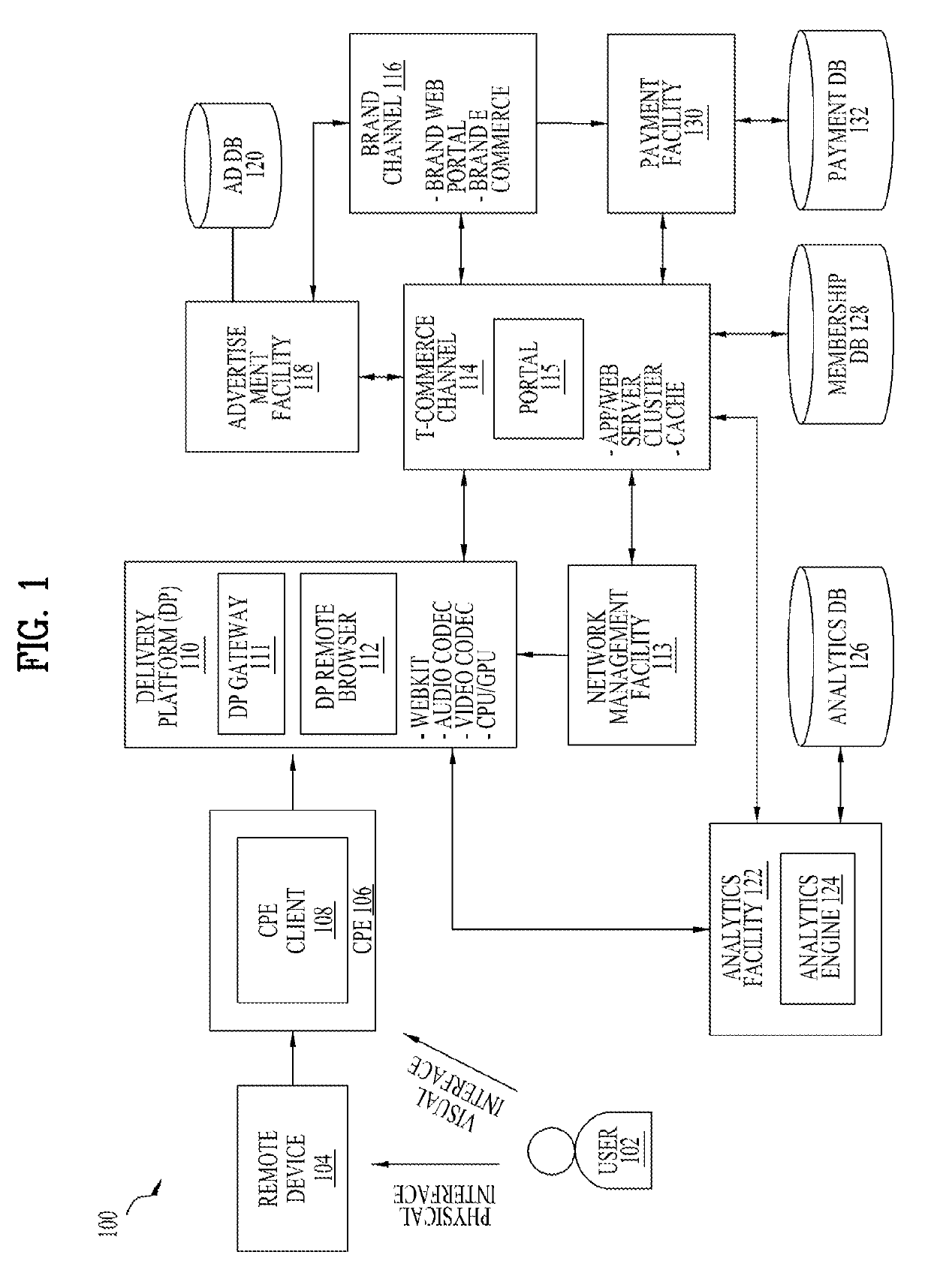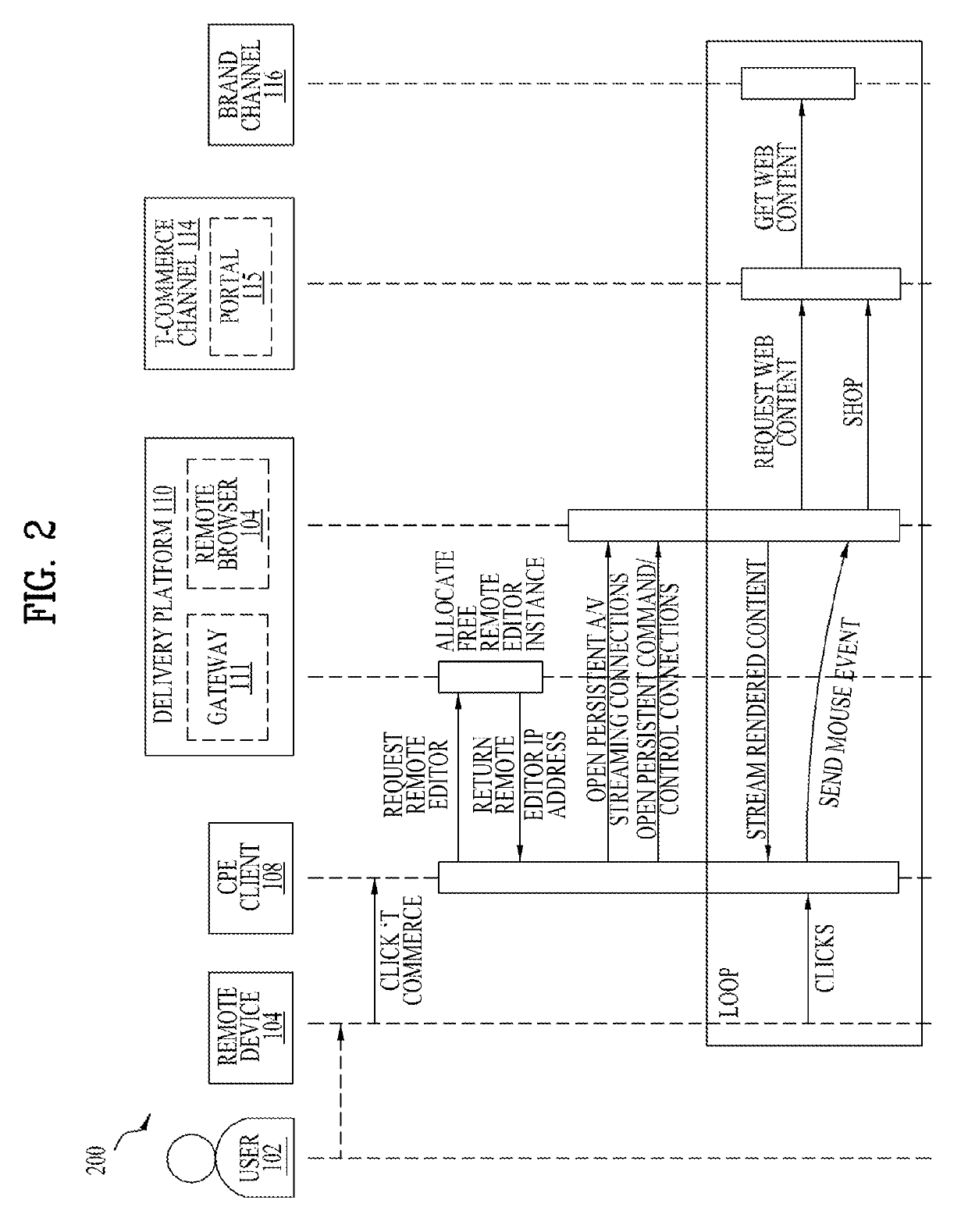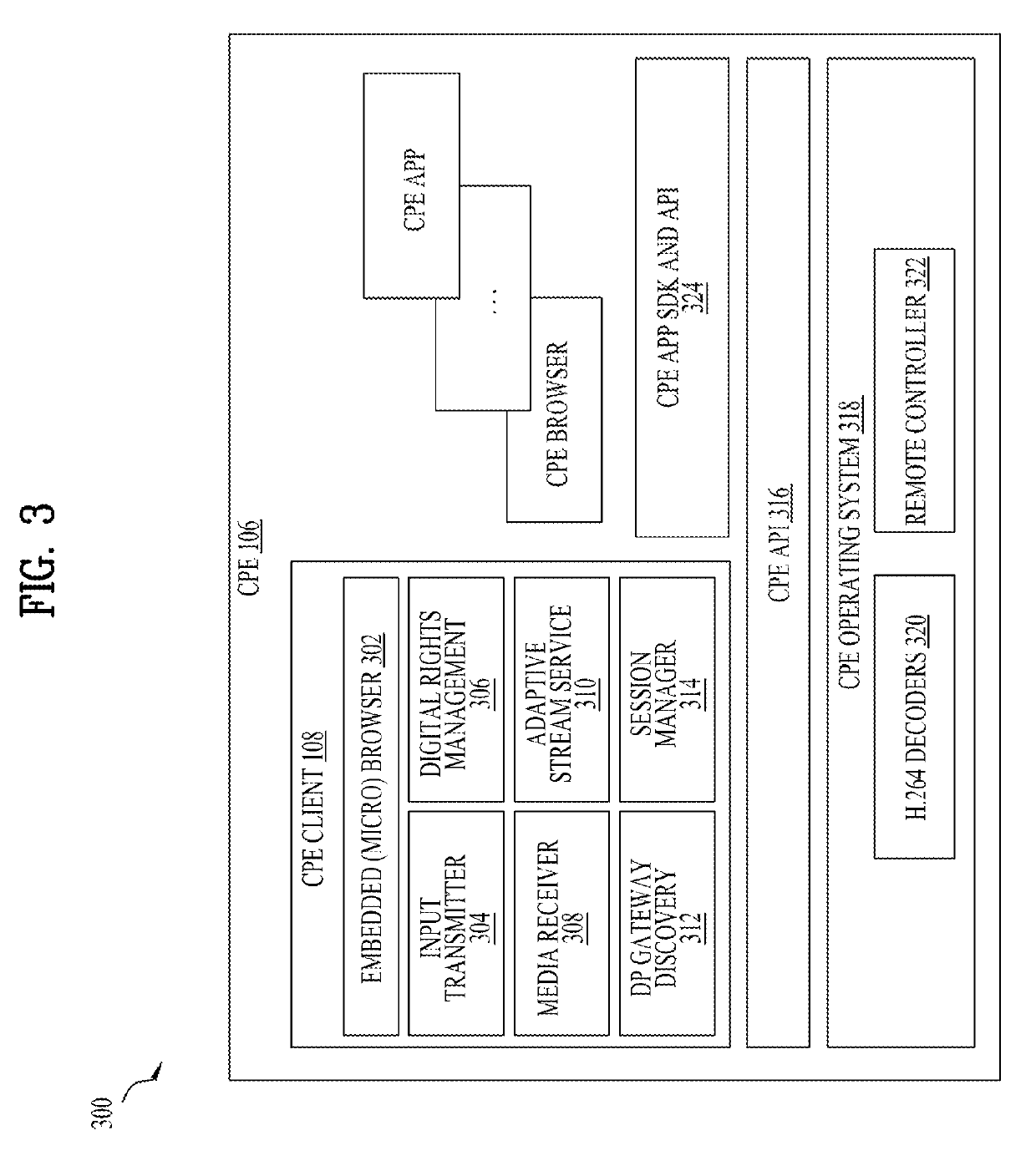Apparatus and method for processing a multimedia commerce service
a multimedia commerce and applicability technology, applied in the field of multimedia commerce delivery, can solve the problems of limited processing power in a mobile device, significant limitations of mobile devices, and limited screen and keyboard capabilities, so as to achieve the effect of ample processing capacity, memory and cache, and extreme video and audio performan
- Summary
- Abstract
- Description
- Claims
- Application Information
AI Technical Summary
Benefits of technology
Problems solved by technology
Method used
Image
Examples
first embodiment
[0397]In a first embodiment, payment information of a user is pre-stored in a T-commerce channel processor and then payment is made according to a user request for purchase.
second embodiment
[0398]In a second embodiment, when a T-commerce channel processor generates and provides a unified user interface to a CPE, a user inputs payment information via the provided unified user interface. The input payment information of the user is sent to a brand channel processor via the T-commerce channel processor and the brand channel processor communicates with a predetermined payment processor to make payment.
[0399]First, the payment processing method according to the first embodiment will be described.
[0400]FIG. 55 is a block diagram of a payment process according to one embodiment of the present invention and FIGS. 56 and 57 are flowcharts illustrating a payment processing method according to one embodiment of the present invention.
[0401]Referring to FIG. 55, a configuration block supporting a payment process in a T-commerce system includes a CPE 5510, a brand channel processor 5520, a T-commerce channel processor 5530 and a payment processor 5540.
[0402]The T-commerce channel pr...
third embodiment
[0444]A payment process according to a payment method may be performed via the payment processor 5540 by transmitting and receiving a payment token, etc. via a cloud server or an IP. Alternatively, at least one step of the payment process may not be performed in the CPE 5510 but may be performed in a remote device, a PC, etc.
[0445]FIG. 59 is a flowchart illustrating a payment processing method according to another embodiment of the present invention.
[0446]For example, the user uploads payment data to a cloud sever (S5910). Uploading may be performed via a digital device having an IP connectable to a cloud server, such as a CPE, a remote device, a mobile device, a PC, etc. Each device accesses the cloud server via the IP directly or indirectly and uploads and stores the payment data. An address at which the payment data is stored is referred to as a first uniform resource locator (URL) in the present embodiment.
[0447]After or simultaneously with step S5910, a request for payment for ...
PUM
 Login to View More
Login to View More Abstract
Description
Claims
Application Information
 Login to View More
Login to View More - R&D
- Intellectual Property
- Life Sciences
- Materials
- Tech Scout
- Unparalleled Data Quality
- Higher Quality Content
- 60% Fewer Hallucinations
Browse by: Latest US Patents, China's latest patents, Technical Efficacy Thesaurus, Application Domain, Technology Topic, Popular Technical Reports.
© 2025 PatSnap. All rights reserved.Legal|Privacy policy|Modern Slavery Act Transparency Statement|Sitemap|About US| Contact US: help@patsnap.com



